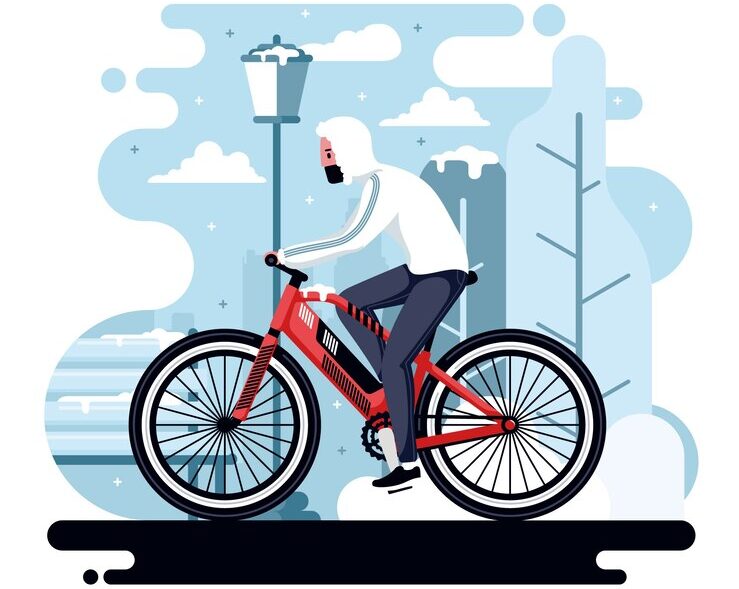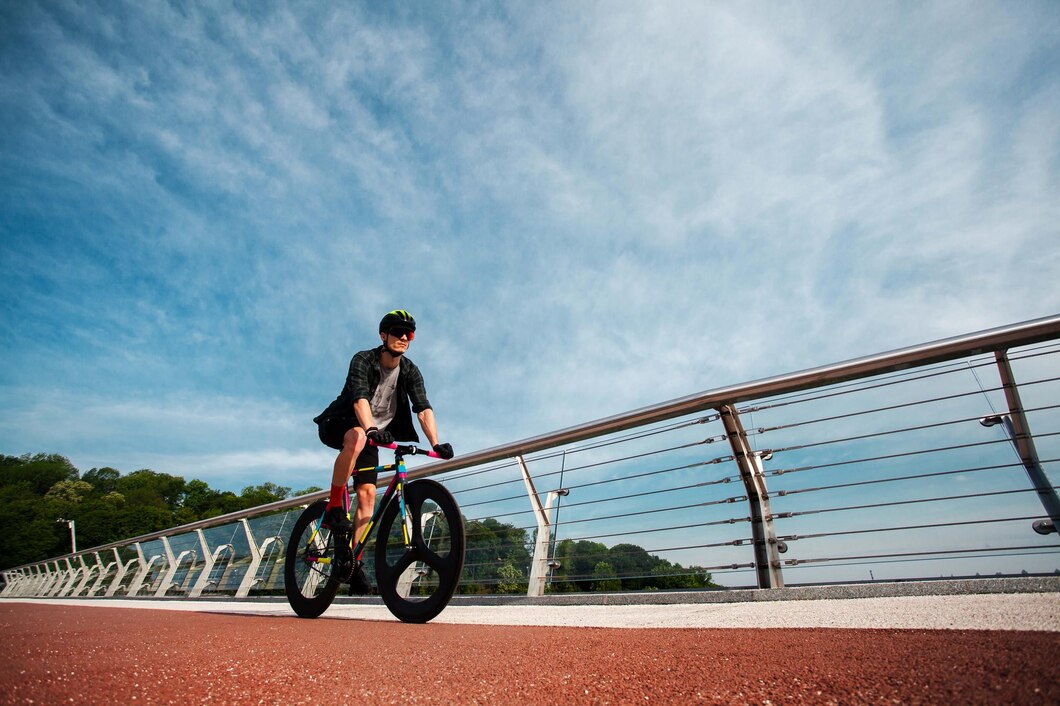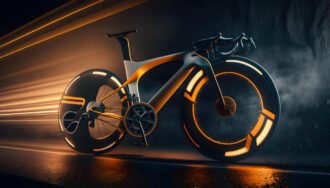The Ultimate Guide to Choosing the Best Commuter and Off-Road eBike
- 1 What is an eBike?
- 2 Why are eBikes becoming so popular?
- 2.1 Commuter eBikes: The Future of Urban Commuting
- 2.2 Key Features of a Good Commuter eBike
- 2.2.1 Battery Life and Range
- 2.2.2 Comfort and Ergonomics
- 2.2.3 Safety Features
- 2.2.4 Off-Road eBikes: Tackling the Trails with Electric Power
- 2.3 Benefits of an Off-Road eBike
- 2.3.1 Terrain Versatility
- 2.3.2 Boosted Endurance
- 2.3.3 Eco-Friendly Adventure
- 3 How to Choose Between a Commuter and Off-Road eBike
- 3.1 Riding Terrain:
- 3.2 Comfort and Riding Position:
- 3.3 Motor and Battery:
- 3.4 Tires:
- 3.5 Suspension:
- 3.6 Accessories:
- 3.7 Budget:
- 4 Conclusion
Introduction: The eBike Revolution
Ah, the eBike! It’s not just a bike, but a revolution on two wheels. But what exactly makes an eBike special?
What is an eBike?
Imagine your regular bicycle but with a twist – an electric motor! This motor offers pedal assist, giving riders an added boost, especially up hills or during long rides. It’s like having an invisible friend helping you pedal.
Why are eBikes becoming so popular?
Think of the last time you were stuck in traffic or exhausted from pedaling against a fierce headwind. eBikes solve these problems. They’re faster, more efficient, and make commuting a breeze. Plus, who doesn’t love a bit of tech in their rides?
Commuter eBikes: The Future of Urban Commuting
Have you ever thought about replacing your car or public transport with a bicycle for daily commuting? Sounds exhausting, right? Enter the best commuter eBike.
Key Features of a Good Commuter eBike
Battery Life and Range
Arguably the heart of an eBike. A longer battery life means you can travel further on a single charge. Imagine traveling from home to work and back without fretting about recharging!
Comfort and Ergonomics
Remember, this is about daily commuting. A good commuter eBike should have a comfortable seat, ergonomic handlebars, and a design tailored for urban riding.
Safety Features
Bright lights, efficient brakes, and maybe even a horn. Safety should never be compromised, especially in city traffic.
Off-Road eBikes: Tackling the Trails with Electric Power
For those who crave adventure and love the thrill of the trails, off-road eBikes are your best bet. But why go electric off-road?
Benefits of an Off-Road eBike
Terrain Versatility
Sand, mud, or rocky terrains, an off-road eBike handles them all. The electric boost means you won’t get stuck easily, making adventures more fun.
Boosted Endurance
Tiredness can cut your adventures short. With pedal assist, you can travel longer distances and explore further.
Eco-Friendly Adventure
Nature lovers, rejoice! Off-road eBikes offer an environmentally-friendly way to enjoy the outdoors, reducing carbon footprints.
How to Choose Between a Commuter and Off-Road eBike

Choosing between a commuter and an off-road eBike depends on your specific needs, preferences, and the type of riding you plan to do. Here are some factors to consider when making your decision:
Riding Terrain:
Commuter eBike: If you primarily ride on smooth roads, bike lanes, and urban environments, a commuter eBike is a better choice. It’s optimized for paved surfaces and offers a more efficient and comfortable ride on such terrains.
Off-Road eBike: If you plan to ride on rough and uneven terrain like trails, gravel paths, or mountainous areas, an off-road eBike, such as a mountain eBike, is designed for the job. It offers better suspension and tires suited for off-road conditions.
Comfort and Riding Position:
Commuter eBike: Commuter eBikes typically have a more upright riding position, which is comfortable for longer rides on flat terrain. They often feature comfortable saddles and ergonomic handlebars.
Off-Road eBike: Off-road eBikes are designed with a more aggressive riding position to provide control and stability on challenging terrains. This may be less comfortable for extended rides on smooth surfaces.
Motor and Battery:
Commuter eBike: Commuter eBikes often have smaller motors and batteries compared to off-road eBikes. They are designed for efficiency and may not have the power needed for demanding off-road use.
Off-Road eBike: Off-road eBikes are equipped with more powerful motors and larger batteries to handle the demands of uphill climbs, technical trails, and challenging terrain. This extra power can provide a higher level of performance.
Tires:
Commuter eBike: Commuter eBikes typically have narrower, smoother tires optimized for on-road use, offering less rolling resistance and better efficiency on paved surfaces.
Off-Road eBike: Off-road eBikes come with wider, knobby tires that provide better traction and stability on uneven terrain. These tires are not ideal for smooth roads and may result in a slower, less efficient ride.
Suspension:
Commuter eBike: Commuter eBikes often have minimal or no suspension because they are designed for smooth roads. They rely on the flexibility of the frame and wider tires for a comfortable ride.
Off-Road eBike: Off-road eBikes typically feature suspension systems, both front (hardtail) and rear (full-suspension), to absorb shocks and bumps on rough trails, providing a smoother and more controlled ride.
Accessories:
Commuter eBike: Commuter eBikes often come with racks, fenders, lights, and other accessories to make them more practical for everyday use, like commuting to work.
Off-Road eBike: Off-road eBikes may have fewer accessories and are primarily focused on performance in challenging environments.
Budget:
Consider your budget and how much you are willing to invest in your eBike. Off-road eBikes tend to be more expensive due to their specialized components.
In summary, choose a commuter eBike if you’ll mainly ride on smooth roads and want a comfortable, efficient, and practical option for daily commuting. Opt for an off-road eBike if you plan to tackle rugged terrain and need the additional power, suspension, and traction to handle those conditions. Your choice ultimately depends on your intended riding environment and personal preferences.
Conclusion
eBikes, whether for commuting or off-road adventures, offer an enhanced biking experience. Evaluate your needs, do thorough research, and get ready to revolutionize your rides. The future is electric, are you charged up?
FAQs
Can I use a commuter eBike for off-road adventures?
While you can, commuter eBikes are tailored for city rides. For rugged terrains, an off-road eBike is recommended.
How often should I recharge my eBike?
It depends on battery capacity and usage. Typically, after 30-60 miles, but always refer to the manufacturer’s recommendation.
Is it hard to maintain an eBike?
No harder than a regular bike. Just ensure the battery and motor are well-maintained.
Can I ride an eBike in the rain?
Most eBikes are water-resistant but not waterproof. Occasional splashes are okay, but avoid heavy rain or submersion.
Do I need a special license for an eBike?
In most places, no. But always check local regulations.

















